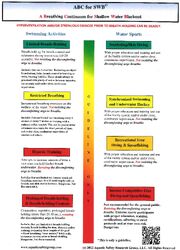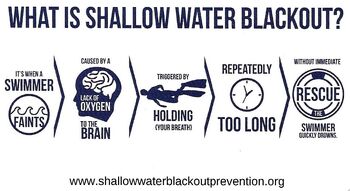- http://www.keyt.com/news/swimmers-attend-shallow-water-blackout-seminar/31672332
- https://www.linkedin.com/grp/post/3972058-5983635912511283200

Shallow Water Blackout PSA Featuring Bob Bowman-0
Links[]
- http://www.shallowwaterblackoutprevention.org
- https://www.facebook.com/shallowwaterblackoutprevention
- http://share.upmc.com/2016/07/about-shallow-water-blackout/?emb=CTA3_Swimmers-at-Risk_4&et_cid=87792&et_rid=75771&utm_medium=Email&utm_source=ExactTarget&utm_campaign=July-Newsletter-Version-B&em_id=bm_SPORTS_July-Newsletter-Version-B_Jul-17_e2
- http://blog.goswim.tv/articles/16447
- Article in Aquatics International (magazine) in November / December 2011, see https://www.aquaticsintl.com/lifeguards/death-linked-to-shallow-water-blackout_o
Contact[]
- Dean E. Haller, Executive Director, Shallow Water Blackout Prevention
- 855-787-5600, dean@shallowwaterblackoutprevention.org
- http://www.shallowwaterblackoutprevention.org
Insights[]
Deaths in 2011 in Staten Island in New York[]
A U.S. Navy SEAL hopeful and his friend, an off-duty lifeguard, died while doing underwater drills that can lead to what is often called Shallow water blackout. The two were in a pool just 3.5 feet deep. No one realized anything was wrong until their limp, unconscious bodies were noticed beneath the surface.
Shallow water blackout is also called hypoxic blackout.
- Warning signs are appearing atpools prohibiting prolonged breath-holding. New York City and Santa Barbara, Calif., are among the first U.S. cities to outlaw long breath-holding in public pools.
Shallow-water blackout occurs when a person tries to swim underwater for an extraordinarily long time, typically to build endurance. Swimmers often start by taking multiple deep breaths to go a longer distance underwater, causing their blood levels of carbon dioxide to plunge. Once underwater, carbon dioxide levels fail to rise quickly enough to signal the brain to breathe, oxygen levels fall rapidly, and the swimmer faints underwater and drowns.
“Because the swimmer has a low oxygen level at the time of the fainting, brain damage occurs within a couple of minutes, and death is very likely,” a doctor warns in a recent public service announcement. Afterward, Olympic gold-medalist Michael Phelps urges coaches to end the risky swim-team tradition of marathon breath-holding workouts.
U.S. Centers for Disease Control and Prevention published a New York City Health Department study May 22, 2015, on “dangerous underwater breath-holding behaviors.” The study said New York City's ban on long breath-holding, passed with little fanfare in 2013 after the Staten Island deaths, could serve as a model for other cities.
- Santa Barbara intensified enforcement efforts of its existing ban after the 2014 death of college water-polo player Nick Johnson, 19. The city has overhauled lifeguard training and posted bright yellow signs warning against the forbidden behavior.
- “I'm a doctor, and I never heard of shallow water blackout," said retired radiologist Rhonda Milner. She founded Shallow Water Blackout Prevention to raise awareness following the 2011 death of her 25-year-old son in their backyard pool in Atlanta, while he was breath-holding to train for spear-fishing.
- There are no nationwide statistics on fatalities from shallow-water blackout. But in New York state alone, four people aged 17 to 22 and “known to be advanced-to-expert swimmers” died in breath-holding incidents from 1988 to 2011, according to the New York City health department study.
- Three deaths that were likely shallow water blackout were recorded between 2008 and 2014 in pools insured by The Redwoods Group, which covers about half of the YMCAs in the United States, said company spokesman Gareth Hedges. All three had a military connection, including a Navy SEAL hopeful who died on New York's Long Island in 2008, a veteran who was also a triathlete who died in Maine in 2011 and a third case in the U.S. Southeast, he said. Meanwhile, a Naval investigation is underway into the April deaths of two SEALS while training in a swimming pool at a Virginia military base, said Lt. David Lloyd, a Navy spokesman.
Illustrations[]


How SWB happens.

